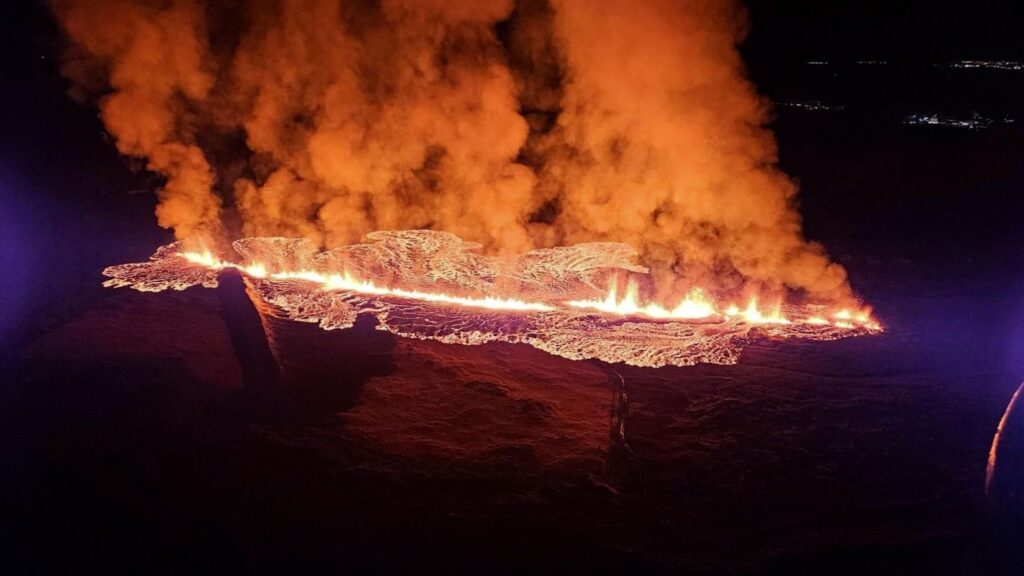Introduction:

In the early hours of Sunday, a natural spectacle unfolded in southwest Iceland as a volcano erupted near the fishing town of Nature Grindavik. The eruption, reported by Iceland’s public broadcaster RUV, marks a recurrence of geological activity in the region, prompting evacuations and raising questions about the unpredictable nature of Iceland’s volcanic landscape.
The volcanic activity commenced around 03:00 GMT, catching the residents of Nature Grindavik off guard. The Icelandic Meteorological Office revealed that seismic activity had intensified overnight, leading to the decision to evacuate the town. Reports from the scene suggest that a crack has emerged on both sides of the dikes constructed north of Nature Grindavik, and it remains uncertain in which direction the lava is flowing.
Nature Evacuation and Previous Incidents:
This recent eruption follows the evacuation of Nature Grindavik in November, when another volcanic event occurred. In December, a subsequent eruption took place, but the lava flowed away from the town, sparing it from immediate danger. Despite the periodic evacuations, residents had been allowed to return home for certain periods. The recurrent volcanic activity in the region underscores the challenges faced by those living in proximity to Iceland’s more than 30 active volcano systems.
Geological Significance:
Iceland’s unique geological setting plays a crucial role in these frequent volcanic activities. Situated between the Eurasian and North American tectonic plates, Iceland experiences the constant movement of these massive plates in opposite directions. This movement results in the formation of numerous active volcano systems, making the country a hotbed of geological phenomena.
The Icelandic Meteorological Office plays a vital role in monitoring and predicting volcanic activities in the region. Their efforts include the construction of dikes to mitigate the flow of lava and protect vulnerable areas. Despite these measures, the unpredictable nature of volcanic eruptions makes it challenging to forecast the exact trajectory of the lava flows, as highlighted by the recent event near Grindavik.
Tourist Impact:
The eruption also has implications for tourism, a significant industry in Iceland. The Blue Lagoon, a popular tourist spot, was closed following the eruption, affecting both local and international visitors. The closure serves as a reminder of the delicate balance between the natural wonders that attract tourists and the potential risks associated with living in such geologically active zones.
Live Coverage and Social Media:
As the eruption unfolded, live coverage became a focal point for those interested in witnessing the raw power of nature. The BBC provided live streaming options for viewers to witness the volcanic activity. Social media platforms also played a role in disseminating information, with users sharing updates, images, and videos, creating a real-time narrative of the event.
Conclusion:
The recent eruption near Grindavik serves as a stark reminder of Iceland’s geological volatility. As residents once again face evacuations and uncertainty, the world watches in awe at the forces shaping the island’s landscape. It prompts reflection on the delicate coexistence of human settlements with the untamed beauty and power of nature, emphasizing the need for ongoing research, monitoring, and preparedness in regions prone to volcanic activities.